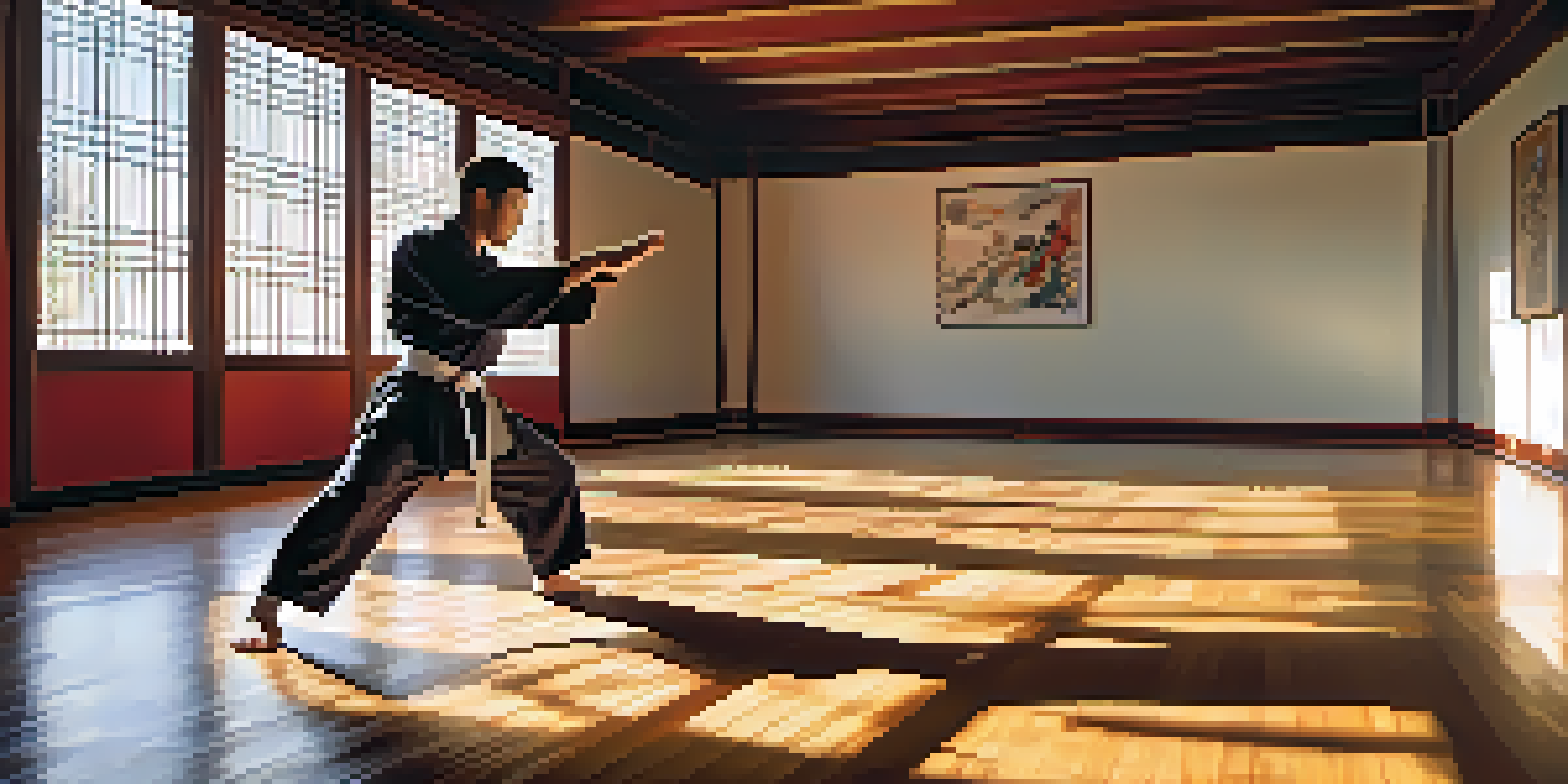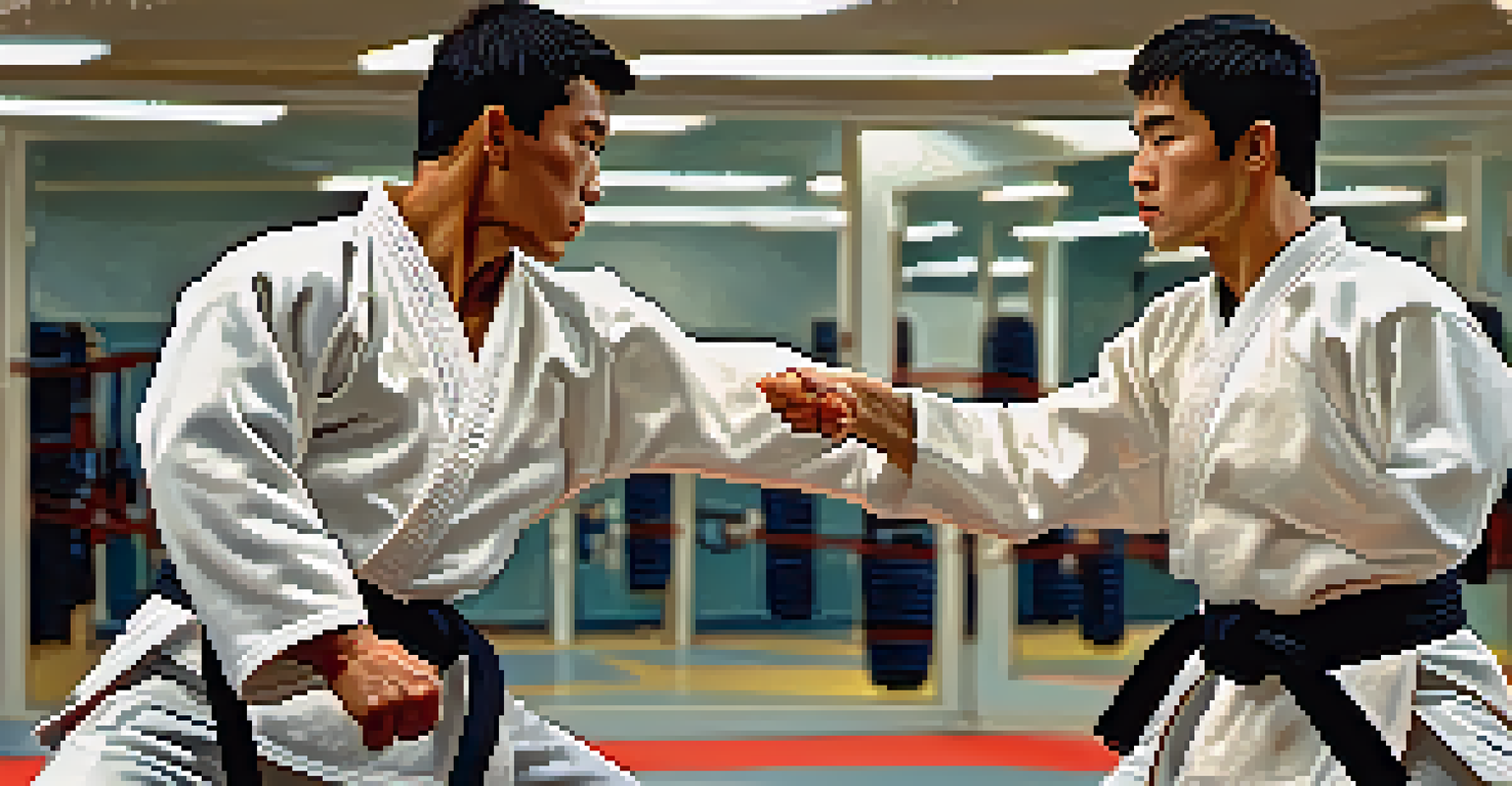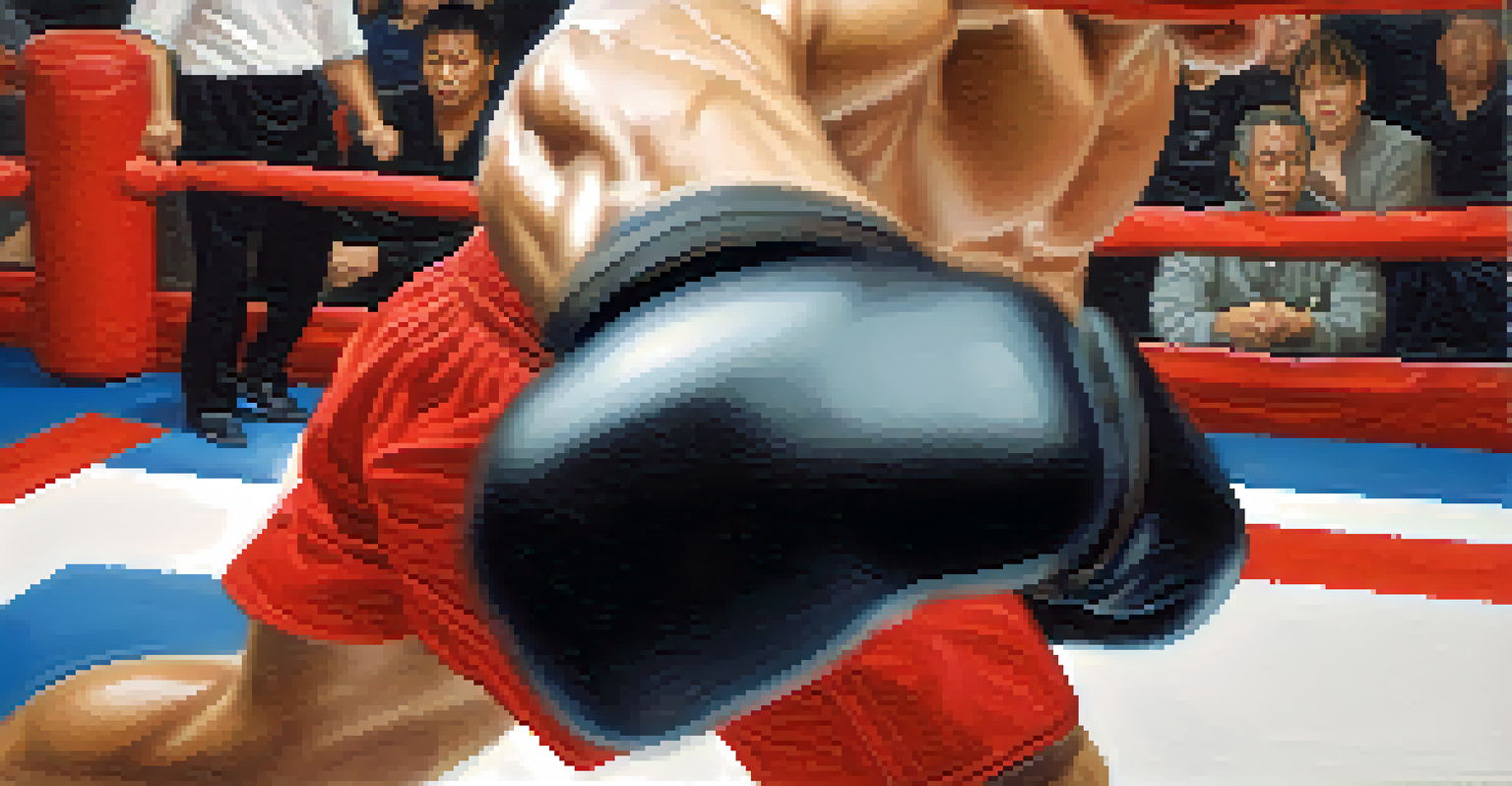Training Drills to Improve Self-Defense Skills in Martial Arts

Understanding the Basics of Self-Defense in Martial Arts
Self-defense in martial arts is about more than just throwing punches or kicks; it's about understanding how to protect yourself effectively. Knowing the fundamentals, like stance and movement, allows you to react instinctively when faced with a threat. Each martial art has its own approach, but the core principles of awareness and technique remain universal.
The best defense is a good offense.
For beginners, grasping these fundamentals can feel like learning a new language. Think of it as building a foundation for a house: without a solid base, everything else is at risk. Mastering basic techniques not only boosts confidence but also prepares you for more advanced drills.
Ultimately, a strong understanding of self-defense principles will shape how you train. As you progress, you can refine your skills and adapt your responses based on real-life scenarios, making your training both practical and impactful.
Drill #1: Shadow Fighting for Reflex Development
Shadow fighting is a solo drill that allows martial artists to practice techniques and movements without a partner. This exercise enhances your reflexes and helps you visualize your responses to various attack scenarios. As you move through your techniques, focus on fluidity and precision, just like an actor rehearsing their lines.

Imagine yourself in a real-life situation; this mental imagery can make your movements more instinctive. By simulating different attacks and defenses, you can develop muscle memory, which is crucial for quick reactions in high-pressure situations. This way, when faced with a real threat, your body knows how to respond automatically.
Fundamentals Build Confidence
Mastering the basic techniques of self-defense lays a strong foundation that boosts confidence and prepares you for advanced training.
Incorporating shadow fighting into your routine can be both fun and beneficial. Try varying your pace and intensity, or even adding in different techniques, to keep things fresh and challenging.
Drill #2: Partner Drills for Realistic Scenarios
Training with a partner is essential for practicing self-defense techniques in a realistic context. Partner drills allow you to simulate attacks and defenses, helping you learn how to react under pressure. This collaborative practice not only builds your skills but also fosters trust and communication with your training partner.
In the middle of difficulty lies opportunity.
A great example is the 'attack and defend' drill, where one partner practices a strike while the other learns to block or evade. This back-and-forth not only sharpens your timing and distance management but also builds confidence to face an actual confrontation. Just like in a dance, each partner must respond to the other's movements seamlessly.
To maximize the benefits, vary the intensity of the drills. Start slow to focus on technique, then gradually increase the speed and realism, allowing you to adapt to different types of attacks. This progression is key to ensuring you’re prepared for real-world situations.
Drill #3: Pad Work for Power and Precision
Pad work is a fantastic way to enhance both power and precision in your strikes. By practicing on focus pads or heavy bags, you can focus on hitting accurately while also developing the strength behind your punches and kicks. This drill is like sculpting; with each strike, you're chiseling away to reveal your best self-defense skills.
As you strike the pads, pay attention to your form and follow through. Good technique not only increases the effectiveness of your strikes but also reduces the risk of injury. Think of it as honing a fine instrument; every detail matters in achieving the perfect sound—or in this case, an effective strike.
Partner Drills Enhance Skills
Practicing with a partner in realistic scenarios helps develop reaction skills and fosters trust, making training more effective.
To keep your pad work engaging, mix in combinations and vary your targets. This approach not only enhances your striking skills but also helps you learn how to adapt your attacks based on an opponent’s movement, making you a more versatile martial artist.
Drill #4: Sparring to Practice Reaction Skills
Sparring is a critical aspect of martial arts training that allows you to apply your skills in a controlled environment. This live practice helps you develop reaction skills, adapt to different fighting styles, and learn how to read your opponent’s movements. It’s like playing a game of chess, where you must anticipate your opponent's next move while strategizing your own.
During sparring, remember that the goal is not just to win but to learn. Focus on what works and what doesn’t, and be open to feedback from your instructor and partners. Each sparring session can provide valuable insights into your strengths and areas for improvement.
To ensure effective learning, set specific goals for each sparring session. Whether it’s working on a new technique or improving your defense, having a focus can enhance your training experience and make sparring sessions more productive.
Drill #5: Situational Awareness Exercises
Situational awareness is crucial for effective self-defense, and specific exercises can help sharpen this skill. These drills often involve role-playing scenarios where practitioners must identify potential threats and decide on the best course of action. Think of it as a game of 'what if,' where you explore different responses to various situations.
For instance, you might practice walking through a crowded area while remaining aware of your surroundings, taking note of exits and potential hazards. This heightened awareness translates directly to real-life situations, where your ability to perceive danger can make all the difference.
Situational Awareness Matters
Improving your situational awareness through specific exercises can significantly enhance your ability to identify and react to potential threats.
Incorporating situational awareness into your training not only enhances your self-defense skills but also builds your confidence. Knowing that you can assess and react to potential threats prepares you for a safer martial arts journey.
Drill #6: Flexibility and Conditioning for Better Defense
Flexibility and conditioning are often overlooked but are essential components of self-defense training. Incorporating these elements into your drills can enhance your overall performance and reduce the risk of injury. It's like preparing an athlete for their game; every aspect of their physicality plays a role in their success.
Regular stretching and conditioning exercises improve your range of motion, allowing you to execute techniques more effectively. Think about it: the more flexible you are, the easier it is to dodge an attack or escape a hold. This flexibility can give you the edge you need in critical moments.

To incorporate conditioning into your routine, consider interval training, which builds strength and endurance. A well-rounded approach to fitness ensures you’re not just skilled in technique but also physically prepared to handle the demands of self-defense.
Conclusion: The Path to Mastering Self-Defense Skills
Improving your self-defense skills in martial arts is a journey that requires dedication, practice, and a willingness to learn. The drills outlined in this article are designed to build a solid foundation, enhance your reaction time, and prepare you for real-world situations. Remember, consistency is key; the more you practice, the more instinctive your responses will become.
As you progress, don’t forget to reflect on your experiences and adapt your training accordingly. Each drill offers unique insights that can help you refine your techniques and enhance your overall effectiveness. It's a continuous cycle of learning and growth, much like mastering a craft.
Ultimately, the goal of these training drills is not just to become a better martial artist but to empower yourself with the skills needed to navigate potentially dangerous situations. Embrace the process, stay committed, and watch yourself transform into a more confident and capable self-defense practitioner.